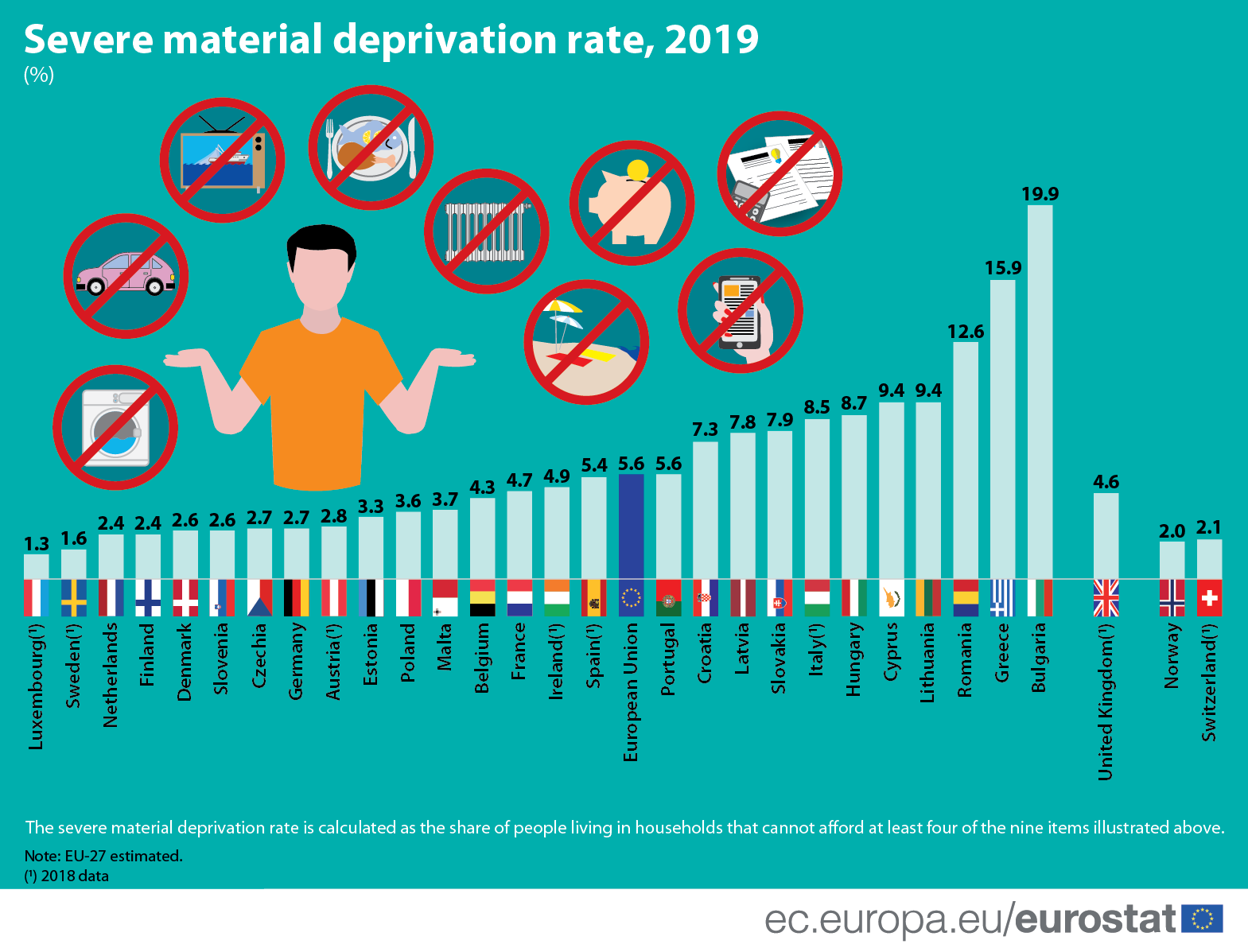
In 2019, 5.6% of the population or around 24 million people in the European Union (EU) were severely materially deprived. This means that they cannot afford at least four of the following items, which are considered by most people to be desirable or necessary to lead an adequate life: pay their bills on time; keep their home adequately warm; face unexpected expenses; eat meat (or fish or the vegetarian equivalent) regularly; take a one week holiday away from home; a TV; a washing machine; a car; a telephone.
The 2019 data reflect the continued downward trend in the proportion of people severely materially deprived in the EU since the peak of 10.2 % in 2012. However, due to lockdowns implemented across the world in 2020 to slow down the rapid spread of the coronavirus it can be expected that in 2020 the downward trend of severely materially deprived people will change. In addition, those people already in this situation may find it more difficult to cope with the social and financial disruptions caused by the containment measures.
Source dataset: ilc_mddd11
Single adult households are most affected. In 2019, the rate of severe material deprivation for households with only one adult under 65 years and no dependent children was 9.4%. It stood at 10.7% for a household comprised of a single adult with children. For households where two or more adults are present, the rates are significantly lower: 4.4% without children and 5.1% with children.
In 2019, the EU severe material deprivation rate for people aged less than 18 years was the same (5.8 %) as for persons aged 18-64 years. In all previous years (2010-2018) the rate for younger people had been higher.
Highest rate of severe material deprivation in Bulgaria and Greece
Across the EU Member States, Bulgaria (19.9%), Greece (15.9%) and Romania (12.6%) registered the highest shares of severe material deprivation in 2019. In all three countries, the severe material deprivation fell compared to the year before.
In contrast, the severe material deprivation rates were below 2.5 % in Luxembourg (1.3% in 2018), Sweden (1.6% in 2018), the Netherlands and Finland (both 2.4%). Just above 2.5% followed Denmark and Slovenia (both 2.6%), Czechia and Germany (both 2.7%), as well as Austria (2.8% in 2018).
For more information:
- Statistics Explained article on Material deprivation statistics - early results.
- On statistics available in this area, take a look at the overview of statistics on income and living conditions.
- The European Union (EU) includes 27 EU Member States. The United Kingdom left the European Union on 31 January 2020. Further information is published here.
To contact us, please visit our User Support page.
For press queries, please contact our Media Support.


